You walk into the pharmacy to pick up your prescription. The label says atorvastatin instead of Lipitor. You pause. Is this the same thing? Did they give you the wrong medicine? You’re not alone. Many people feel this way when they get an authorized generic - a drug that’s chemically identical to the brand-name version but sold under a generic label. It’s not a trick. It’s not a downgrade. It’s the exact same pill, just without the brand name on the box.
What Exactly Is an Authorized Generic?
An authorized generic is a brand-name drug made by the original manufacturer and sold as a generic. No changes to the formula. No cut corners. Same active ingredients. Same inactive ingredients. Same size, shape, and coating. The only difference? The label. Instead of "Lipitor," it says "atorvastatin calcium." Instead of "Viagra," it says "sildenafil citrate."
This isn’t some new loophole. It’s built into U.S. drug law. The FDA defines it clearly: an authorized generic is a drug approved under a brand’s New Drug Application (NDA) but sold with different labeling - no trademark, no brand name, no fancy packaging. It’s the same product, just repackaged. And unlike traditional generics, it doesn’t need its own approval from the FDA. It’s already approved - because it’s the same pill the brand company made all along.
How Is It Different From a Regular Generic?
Here’s where things get confusing. Most people think all generics are the same. They’re not.
Traditional generics - the kind you see most often - must prove they’re "bioequivalent" to the brand. That means they deliver the same amount of drug into your bloodstream at the same rate. But they can have different fillers, dyes, or coatings. That’s why your generic metformin might be blue and oval, while the brand is white and round. Those differences are allowed - as long as the active ingredient does the same job.
Authorized generics don’t need to prove bioequivalence. Why? Because they’re not different. They’re the exact same batch of medicine, just packaged differently. No extra testing. No waiting. No guesswork. If you’ve taken Lipitor for years, your authorized generic version came off the same production line.
And here’s the kicker: authorized generics don’t show up in the FDA’s Orange Book - the official list of approved generics. That’s because they’re not approved as generics. They’re approved as the brand. So pharmacists have to check a separate FDA list to know which ones are authorized.
Why Do Companies Make Authorized Generics?
It’s not charity. It’s strategy.
When a brand-name drug’s patent expires, the first generic company to file gets 180 days of exclusive rights to sell the generic version. That’s a huge financial win. But the brand company doesn’t just sit back and watch. They can launch their own authorized generic - identical to their brand - right when the exclusivity period starts.
What happens? The first generic company suddenly has competition from the original maker. Prices drop faster. Market share splits. And the generic company might not get the big payday they expected. That’s why some critics say authorized generics undermine the Hatch-Waxman Act - the 1984 law meant to encourage generic competition.
But from the brand’s point of view? It’s simple. They still make money. They keep their customers. They control quality. And they avoid losing the entire market to a competitor. Companies like Pfizer (through Greenstone), Procter & Gamble (through Prasco), and others run entire divisions just to make these versions.
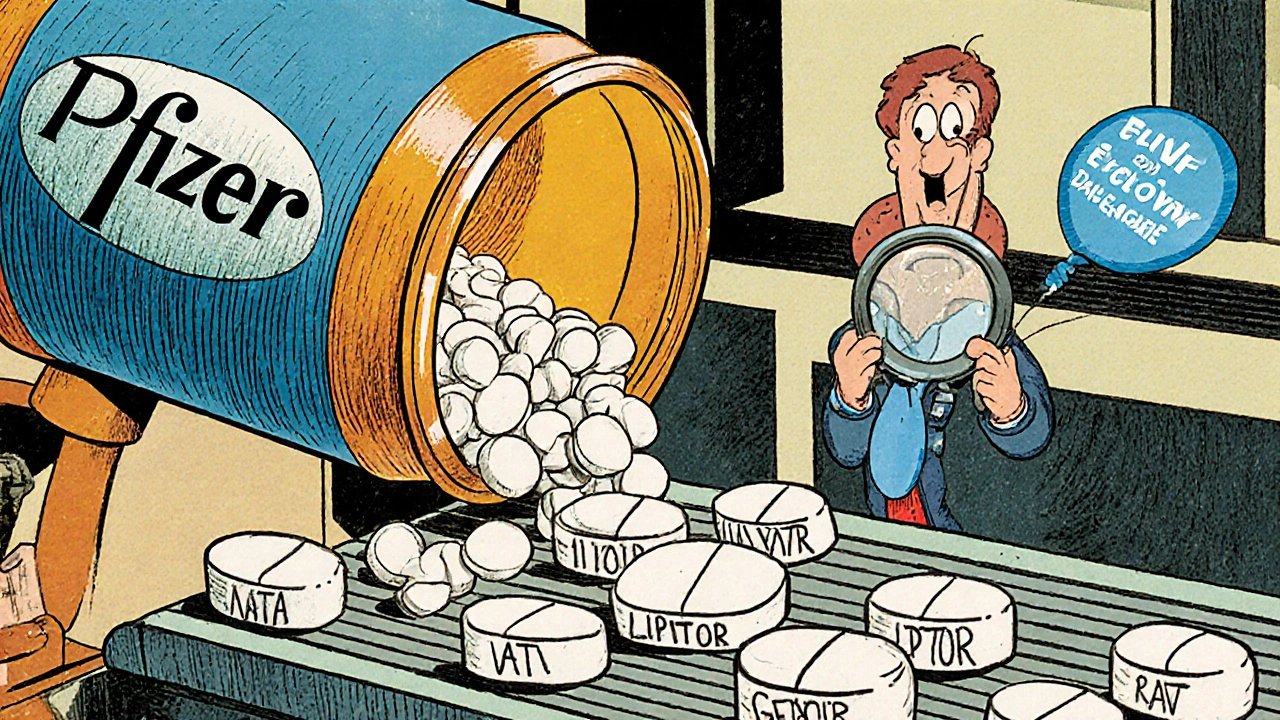
What Does This Mean for You as a Patient?
If you’re on a long-term medication - say, for high blood pressure, cholesterol, or diabetes - you might switch from brand to authorized generic without even knowing it. Your pharmacist might fill it automatically. Your insurance might prefer it. You might not notice anything different.
But sometimes you will. You might open the bottle and see a pill that looks different. Maybe it’s a different color. Maybe the imprint is different. That’s normal. It’s still the same drug. No less effective. No higher risk.
Some patients worry. They think, "If it looks different, is it safe?" The answer is yes. The FDA says authorized generics are therapeutically equivalent to the brand. That means they work the same way in your body. Studies show no difference in outcomes. No increase in side effects. No drop in effectiveness.
Still, confusion is common. A 2023 Health Affairs study found that many patients and even some doctors don’t realize authorized generics exist. They assume "generic" means "different." That’s why it’s worth asking your pharmacist: "Is this an authorized generic?" If they say yes, you can be confident - you’re getting the exact same medicine.
Why Aren’t Authorized Generics Listed in the Orange Book?
This trips up a lot of people - including pharmacists.
The Orange Book lists drugs approved under Abbreviated New Drug Applications (ANDAs). That’s the path traditional generics take. Authorized generics don’t go through that process. They’re marketed under the original brand’s NDA. So they’re not in the Orange Book.
Instead, the FDA keeps a separate, publicly available List of Authorized Generic Drugs. It’s updated regularly. But it’s not as well-known. Pharmacists have to look it up manually. If your prescription says "atorvastatin," and you get a white oval pill with "LIPITOR" stamped on it - that’s not an authorized generic. That’s the brand. If it says "ATV" or "TEVA," it might be a traditional generic. If it says "Pfizer" or "Greenstone," it’s likely an authorized generic.
Bottom line: Don’t rely on appearance or the label alone. Ask your pharmacist to confirm. They can check the FDA’s list in seconds.
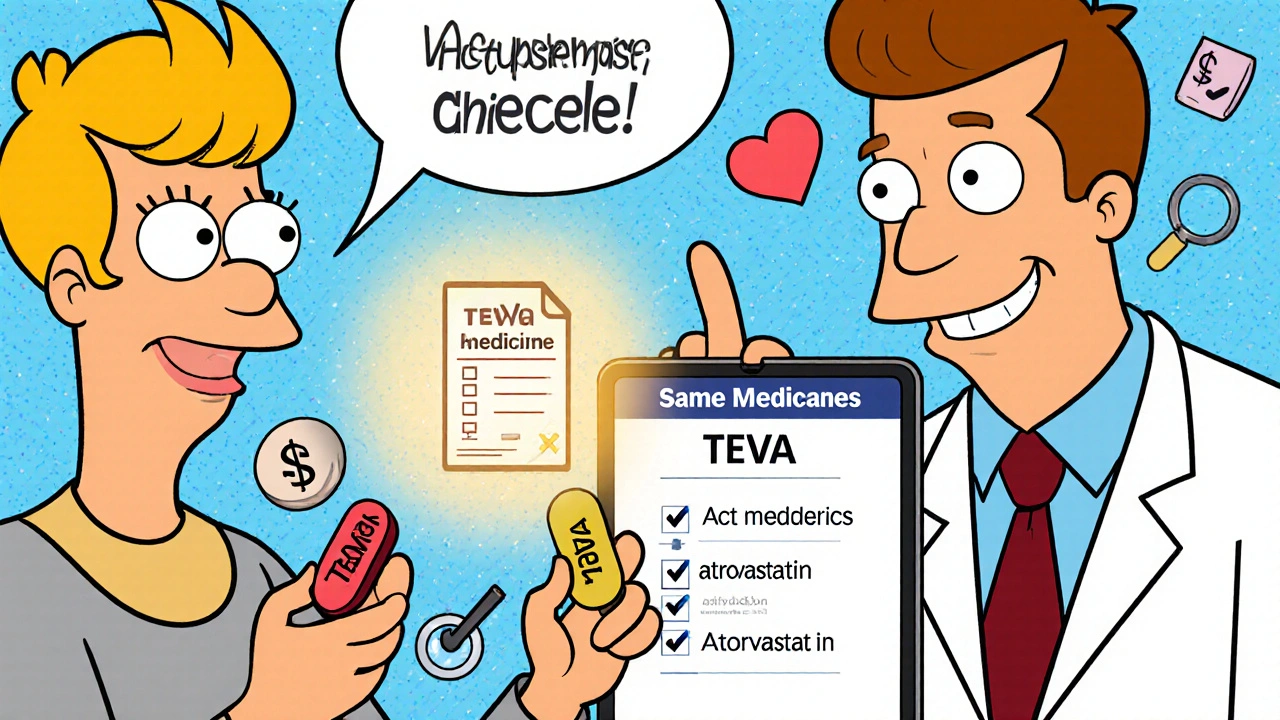
Are Authorized Generics Cheaper?
Usually, yes - but not always.
Because they’re made by the brand company, authorized generics often cost more than traditional generics. But they’re still cheaper than the brand-name version. Sometimes, they’re priced right in the middle. Insurance plans sometimes prefer them because they’re predictable in quality. And since they’re the same as the brand, prescribers don’t have to worry about switching effects.
GoodRx data shows that in 2024, authorized generics for popular drugs like atorvastatin and metformin were 20-40% cheaper than the brand, but 5-15% more expensive than the cheapest traditional generic. For some patients, that small price difference isn’t worth the peace of mind.
What Should You Do If You’re Prescribed One?
Here’s what to do next time you get a new prescription:
- Check the label. Does it say the brand name? If not, ask: "Is this an authorized generic?"
- Compare the pill. If it looks different, don’t panic. Ask: "Is this the same as my old one?"
- Ask your pharmacist to check the FDA’s authorized generic list. They can confirm it’s identical to your brand.
- Don’t assume "generic" means "inferior." Authorized generics are the gold standard for consistency.
- If you feel any change in how the drug works - even slightly - tell your doctor. It’s rare, but not impossible.
And if you’re on a long-term medication? Keep a note of what version you’re taking. That way, if you switch pharmacies or refill online, you can make sure you’re getting the same one.
The Bigger Picture: Is This Fair?
There’s no easy answer.
On one hand, authorized generics give patients access to the same high-quality drug at a lower price. They reduce uncertainty. They prevent supply shortages. They’re a win for safety.
On the other hand, they can block the first generic company from reaping the rewards of challenging a patent. That’s the whole point of the 180-day exclusivity - to reward companies that invest time and money to break through legal barriers. If the brand company launches its own generic right away, that incentive vanishes.
Some lawmakers have tried to fix this. But so far, the FDA and courts have upheld the practice. It’s legal. It’s common. And it’s here to stay.
As more blockbuster drugs lose patent protection - like Humira, Eliquis, and Ozempic - expect to see more authorized generics. The big players know how to play the game. And patients? They’re the ones who benefit - if they know what to look for.
Are authorized generics safe?
Yes. Authorized generics are identical to the brand-name drug in every way - active ingredients, dosage, strength, and formulation. They’re made in the same factory, on the same line, with the same quality controls. The FDA considers them therapeutically equivalent. There’s no increased risk of side effects or reduced effectiveness.
Why does my pill look different if it’s the same drug?
The color, shape, or imprint may change to distinguish it from the brand-name version. This is required by law to avoid confusion. But the medicine inside is exactly the same. It’s like buying a soda in a different bottle - same drink, different label.
Can I ask for an authorized generic by name?
Yes. You can ask your pharmacist: "Can you fill this with the authorized generic?" or "Is there an authorized generic version of this drug?" They can check the FDA’s list and usually accommodate your request. Some insurance plans automatically switch to authorized generics to save money.
Do authorized generics cost less than traditional generics?
Not always. Authorized generics are often priced higher than traditional generics because they’re made by the brand company. But they’re still cheaper than the brand-name version. The price difference is usually small - 5% to 15% - but some patients prefer the certainty of knowing it’s the exact same drug.
Why isn’t the authorized generic listed in the Orange Book?
Because it’s not approved as a generic. It’s approved under the brand’s original New Drug Application (NDA). The Orange Book only lists drugs approved under the Abbreviated New Drug Application (ANDA) process. Authorized generics are tracked separately on the FDA’s List of Authorized Generic Drugs.
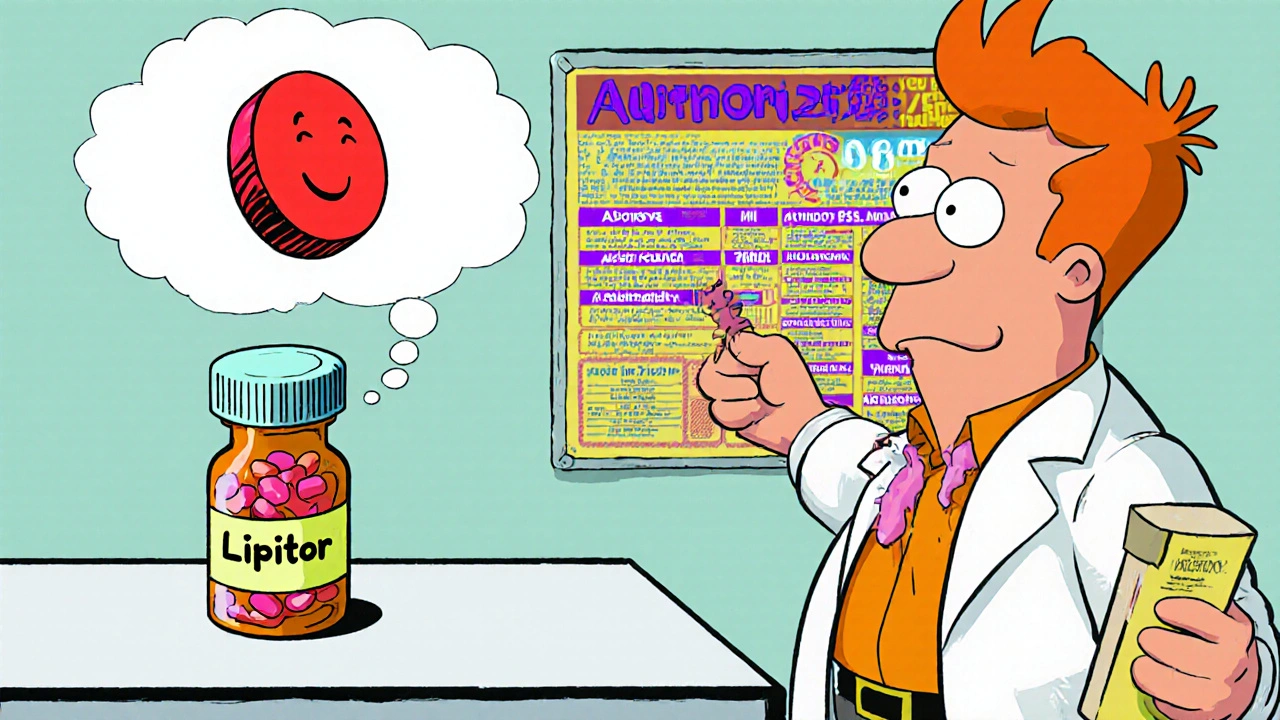
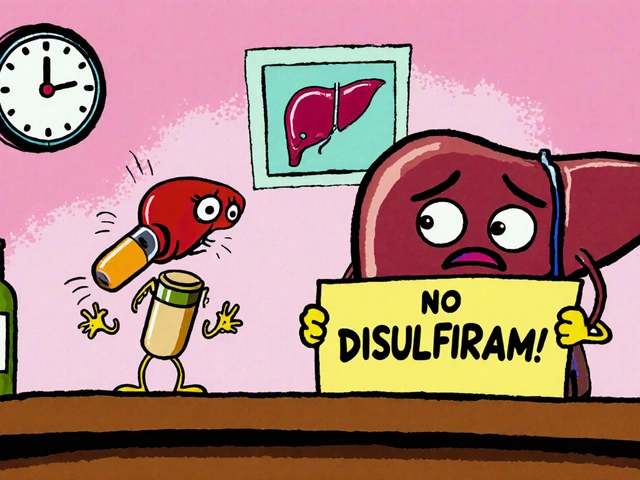 How Disulfiram Helps Treat Alcohol-Induced Liver Disease
How Disulfiram Helps Treat Alcohol-Induced Liver Disease
 Calcipotriol for Psoriasis in Skin of Color: Benefits, Risks & Usage
Calcipotriol for Psoriasis in Skin of Color: Benefits, Risks & Usage
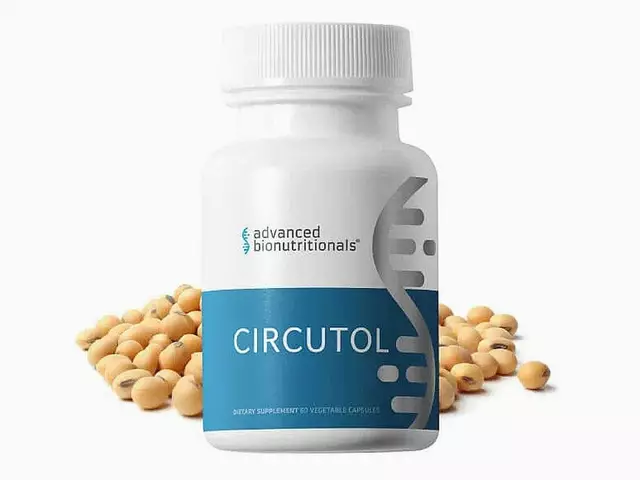 Discover the Life-Changing Benefits of Lithium: The Essential Dietary Supplement
Discover the Life-Changing Benefits of Lithium: The Essential Dietary Supplement
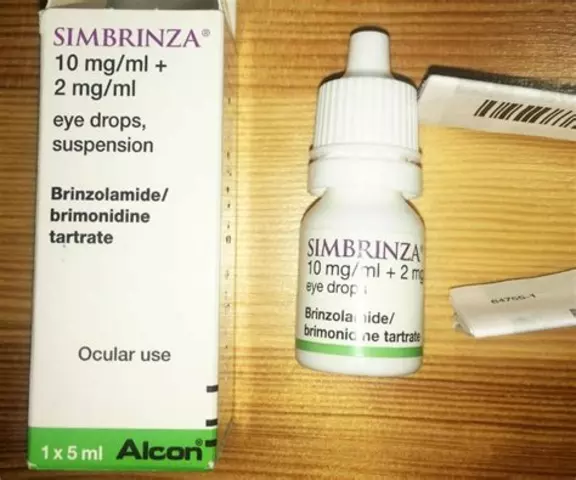 Tips for ensuring proper hygiene while using brimonidine tartrate eye drops
Tips for ensuring proper hygiene while using brimonidine tartrate eye drops
 Buy Cheap Generic Cialis Online - Safe Guide 2025
Buy Cheap Generic Cialis Online - Safe Guide 2025
Riohlo (Or Rio) Marie
November 19, 2025 AT 08:34Oh honey, let me just say - this is peak pharmaceutical theatre. The brand-name companies are basically playing 4D chess with our prescriptions. They make the drug, then turn around and sell the *exact same pill* under a different label like it’s some kind of corporate magic trick. And don’t get me started on how the FDA lets them off the hook by not listing these in the Orange Book. It’s not transparency - it’s obfuscation dressed up as regulation. I swear, if I had a dollar for every time I got a different-looking pill and panicked, I’d have enough to buy the whole damn Pfizer stock portfolio. 😌
Conor McNamara
November 20, 2025 AT 02:32wait so u r saying the company that made lipitor is also selling the 'generic' version? that seems sus. like… why would they do that? maybe its a secret way to control the market? i think theyre testing us. like… what if the 'same pill' has a different filler? or maybe the batch is from a different country? i read somewhere the fda lets them skip testing because they're 'the same' but… how do we know? they could be lying. i think this is part of the big pharma agenda to keep us confused. i dont trust it.
steffi walsh
November 21, 2025 AT 11:58Yessss this is such a good breakdown!! 🙌 I switched to an authorized generic for my cholesterol med last year and was totally freaked out when the pill looked different - then my pharmacist showed me the FDA list and I cried a little (in a good way). It’s the same pill! Same factory! Same me! No more anxiety. Seriously, if you’re scared, just ask your pharmacist - they LOVE explaining this stuff. You’re not alone, and you’re not getting a lesser version. You’re getting the VIP version, just without the logo. 💖
Leilani O'Neill
November 22, 2025 AT 18:18This is exactly why America’s healthcare system is a joke. You pay premium prices for brand-name drugs, then they hand you a generic that’s literally identical - but now you’re supposed to be grateful? No. This isn’t innovation. This is exploitation disguised as savings. The FDA should be protecting patients, not enabling corporate sleight-of-hand. And don’t even get me started on how these 'authorized' generics aren’t even listed properly. Who approved this? Someone who works for Pfizer, I bet. This isn’t medicine - it’s branding theater.
Katelyn Sykes
November 23, 2025 AT 16:46Just had this happen with my metformin last week. Looked totally different so I asked my pharmacist - turns out it was an authorized generic from Greenstone. Same exact pill as the brand, just cheaper. No side effects, no weirdness. Honestly? Best thing that’s happened to my wallet all year. Stop panicking when the pill changes color. It’s not a glitch, it’s a feature. And if you’re still unsure? Ask. Always ask. Pharmacists are your secret weapon. 🤝
Gabe Solack
November 24, 2025 AT 19:04Big pharma is slick, but this is actually kind of genius for patients. 🤓 I used to switch between generics and freak out every time the pill shape changed. Now I know if it says 'Greenstone' or 'Pfizer' on the bottle, it’s the exact same as Lipitor. No guesswork. No 'is this gonna work?' anxiety. And yeah, it’s not always the cheapest - but for people like me who need rock-solid consistency? Worth every penny. Also, if you see 'ATV' or 'TEVA' - that’s the regular generic. If you see 'Pfizer' or 'Greenstone' - that’s the authorized one. Easy peasy.
Yash Nair
November 26, 2025 AT 14:34india makes better generics than this. why are we letting american companies play this game? the real generic is made in india with strict quality control - not this fake version from pfizer. they are just trying to steal the market. this is not medicine, this is capitalism. the fda is corrupted. why should i trust a drug made by the same company that charged me $500 for lipitor? they are lying. authorized generic? more like authorized scam.
Bailey Sheppard
November 28, 2025 AT 07:05Love this post. Seriously. So many people panic when the pill changes color or size - but if it’s an authorized generic, you’re getting the same medicine your doctor originally prescribed. No need to fear. No need to switch back. Just ask your pharmacist to check the FDA’s authorized list - takes 10 seconds. And if they say yes? You’re golden. No compromise. No risk. Just peace of mind. Keep spreading this info. It matters.
Girish Pai
November 29, 2025 AT 22:50From a pharmacoeconomic standpoint, the authorized generic is a strategic lever within the Hatch-Waxman framework - it’s a preemptive market entry by the originator to dilute the 180-day exclusivity window of the first-filer generic. The NDA-based distribution bypasses ANDA requirements, thus eliminating bioequivalence validation while maintaining therapeutic equivalence. This creates a dual-tiered market where price competition is artificially suppressed by the originator’s vertical integration. The FDA’s non-inclusion in the Orange Book is a regulatory artifact, not an oversight - it’s a deliberate legal distinction to preserve the NDA’s integrity.
Kristi Joy
November 30, 2025 AT 07:47For anyone who’s ever worried about switching meds - you’re not crazy. It’s normal to feel uneasy when something you rely on looks different. But this post? It’s a gift. You’re not being tricked. You’re being given a better deal - same drug, less cost, same safety. I’ve helped so many patients through this exact panic. Just say this to yourself: 'Same factory. Same formula. Same me.' And then breathe. You’ve got this. And if you’re unsure? Ask. Always ask. You deserve to know exactly what’s in your body. 💪
Kristina Williams
December 1, 2025 AT 22:56they are lying. this is how they control us. the same pill? no way. the real drug is made in india. this is just a trick to make you think you're saving money. they put different stuff in it. maybe it has chemicals that make you sleepy. or maybe it causes cancer later. they don't tell you. the fda is in on it. don't trust it. i switched back to the brand because i was scared. you should too.
Riohlo (Or Rio) Marie
December 2, 2025 AT 01:21Ugh, I love how people act like the FDA is some noble guardian of truth. 😒 The moment a patent expires, the brand company launches its own 'generic' to crush the real competition. It’s not about patient care - it’s about market control. And the fact that these aren’t even listed in the Orange Book? That’s not a loophole - it’s a cover-up. I bet if you dug into the manufacturing logs, you’d find the same batch numbers as the brand. They’re literally repackaging their own product and calling it 'generic' to dodge scrutiny. This isn’t healthcare. It’s corporate theater with a white coat.